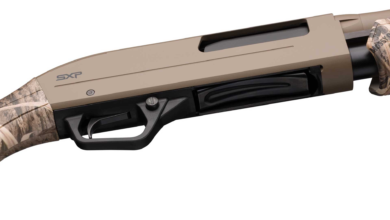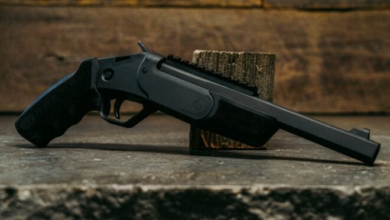TriStar American Classic 1911 in .38 Super
The TriStar American Classic is a sharp-looking 1911 with a bonus: It's available in .38 Super.
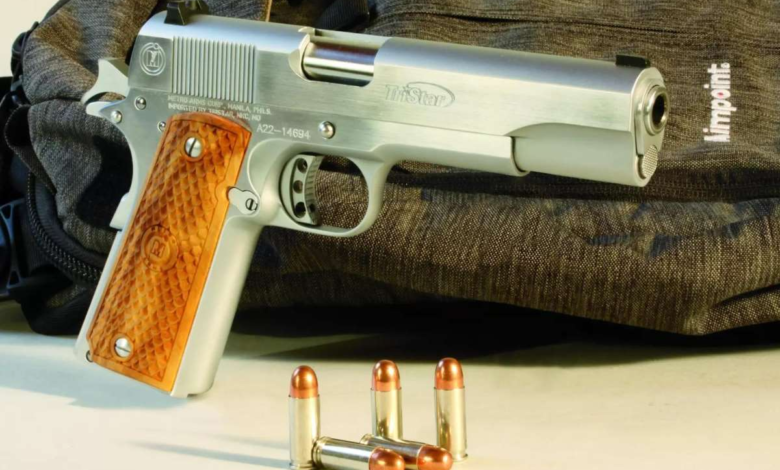
There are some great handguns coming from manufacturers in the Philippines these days, and the guns from Metro Arms can be counted among that number. The company was established about a decade ago by Hector Rodriguez, an IPSC shooter of some note back in the 1990s. Today Metro Arms’ guns are imported by TriStar, a company with a nose for quality firearms it can sell at a good price.
One of its latest imports is a line of 1911s properly called the TriStar Arms American Classic by Metro Arms. There are nearly a dozen American Classics, including Government models, Commanders, blued guns, chrome guns and double-stacks.
The one that caught my attention was the American Classic Government chrome pistol. It caught my attention because in addition to .45 ACP and 9mm, it’s chambered to .38 Super, a cartridge that’s always fascinated me (see accompanying sidebar).
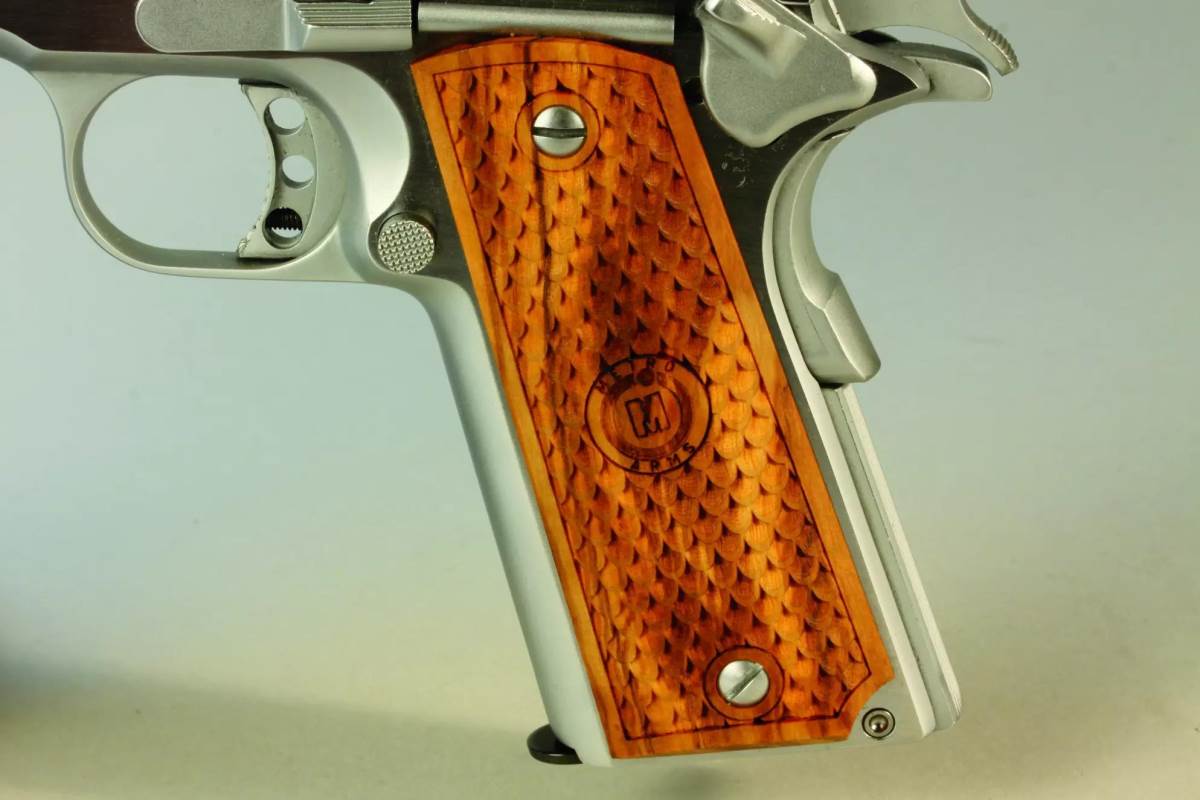
The American Classic lives up to its name. It’s a Government model with a five-inch stainless steel barrel and standard controls.
The barrel is unramped. You can really go down the rabbit hole in a discussion of ramped versus unramped barrels, but the consensus seems to be that for this cartridge you don’t need a ramp unless you’re feeding the gun a steady diet of hot loads—like the competitive shooters who wanted to make Major power factor with the cartridge used to do. Unramped is fine for standard loads.
Weight is 40 ounces. That’s a bit heavier than you might find in a comparable 1911 in .45 ACP, and that makes sense because a .38 Super barrel has less metal removed for the bore.
The gun is treated to a hard chrome finish over stainless steel. It’s quite well done, not over the top like some chrome guns can be. The slide flats and sides of the frame have a high gloss finish, while the slide’s top and ball end cut—as well as the underside of the frame’s dust cover, the trigger guard and frontstrap—are matte.
Serrations are found on the rear of the slide only. They’re narrow, but they’re well cut and numerous, providing good traction. The Metro Arms logo is engraved behind the serrations on the left and right sides. The TriStar logo is engraved forward of the ejection port, and “American Classic” is on the left above the slide stop.
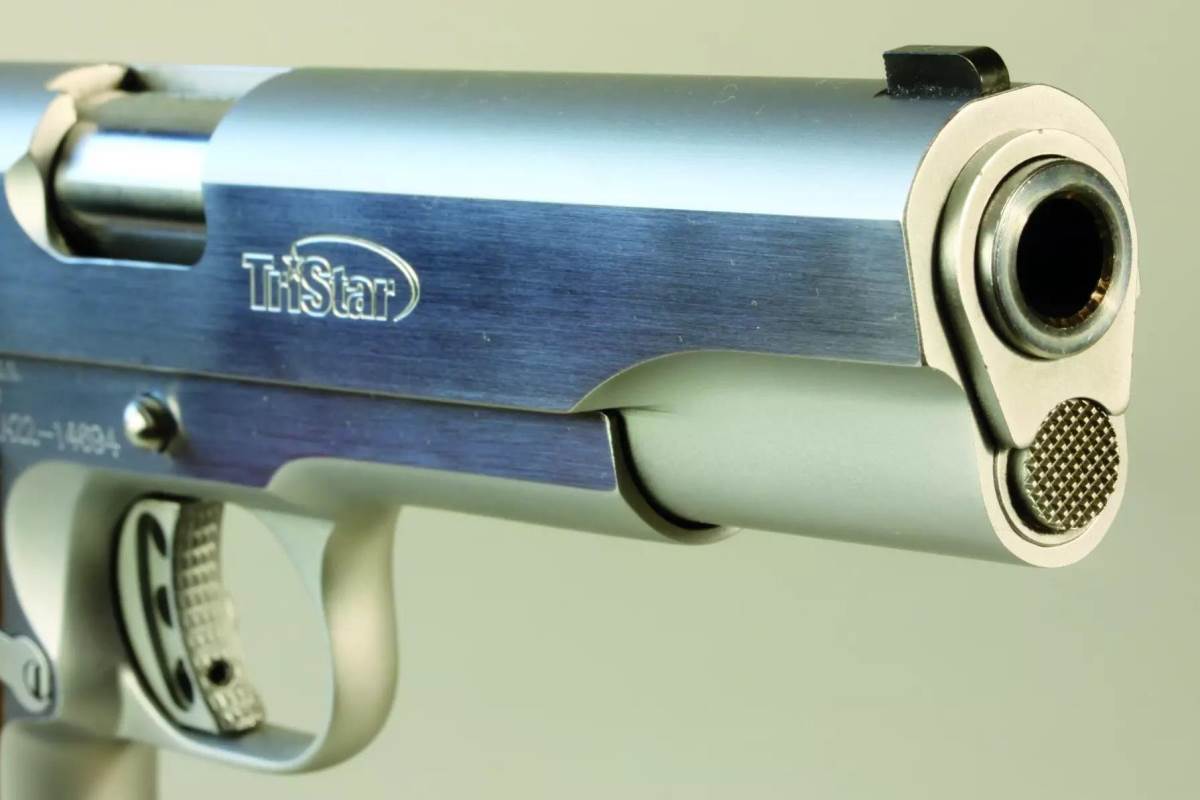
As is common on most 1911s these days, the ejection port is lowered and flared to ensure cases clear the port easily.
The sights are what the company describes as “mil-spec.” Well, perhaps in size, but they’re white three-dot, with the front sight staked in and the drift-adjustable rear sight set in a small dovetail. The front sight is 0.116 inch wide, and it mates up well with the 0.111-inch notch in the rear sight.
The American Classic employs the traditional barrel bushing design and a traditional short guide rod. Bushing fit and slide-to-frame fit are excellent. There’s nary a wiggle when you twist the slide and frame, but it’s not so incredibly tight you’ll have any problems racking the slide right out of the box.
Controls include a well-fitted slide stop and a single-side thumb safety—both of traditional size and not extended. Ditto for the magazine release.
The safety clicks on and off smartly and with the right amount of tension, and it’s serrated for sure operation. If you’re like me and are accustomed to extended thumb safeties, you might find this safety takes a little getting used to. But it works great, and if after shooting it a while you find you don’t like it, a thumb safety is an easy part to replace.
The hammer is solid, with serrations on the spur. In a nod to modernity, the grip safety has a memory bump. The flat mainspring housing has vertical grooves, and the frontstrap is smooth. The magazine well is not beveled.
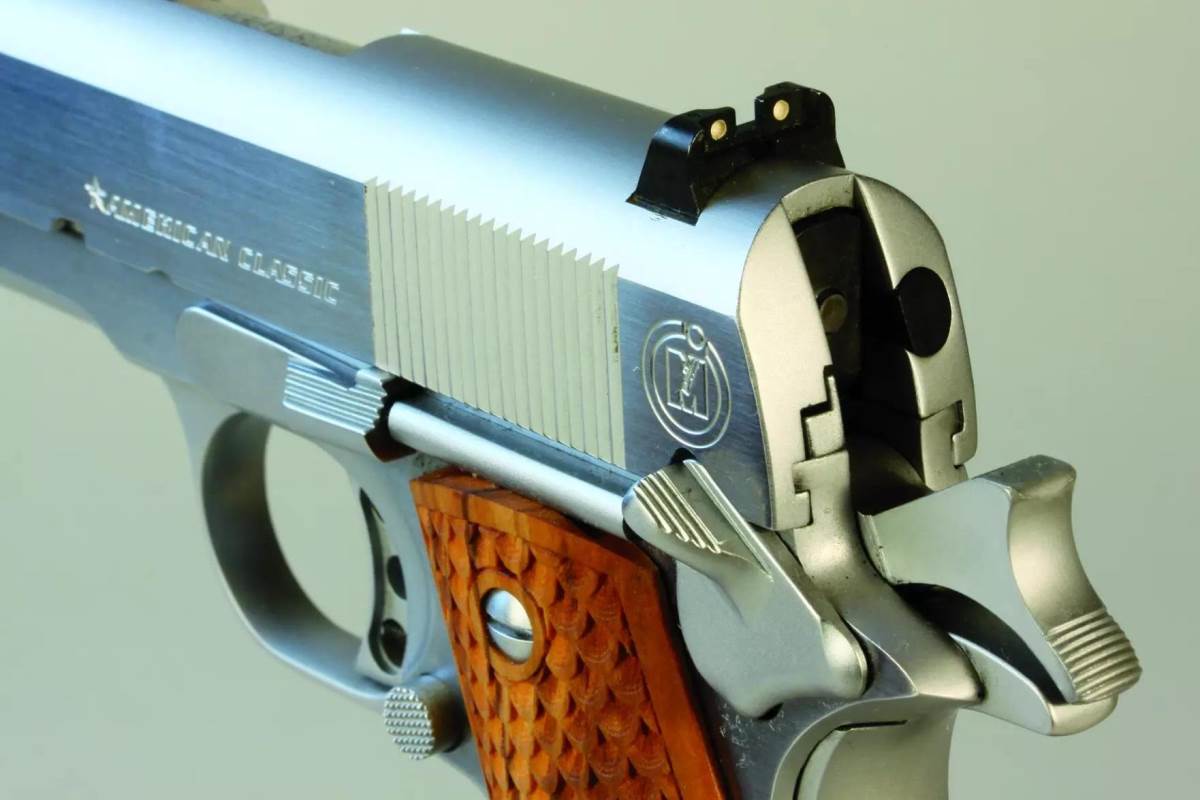
The trigger is a three-hole skeleton design and slightly curved. It has an overtravel adjustment screw. There’s a slight amount of take-up, followed by a bit of gritty creep. However, the pull weight is three pounds, 12 ounces on average and quite consistent.
The grips are a handsome blond hardwood with the Metro Arms logo in the center. They’re held in place with slotted stainless-steel screws.
The texturing is a fish-scale pattern, and while I think these grips are really good looking and complement the look of the pistol perfectly, they’re a bit smooth for my taste. But hey, it’s a 1911. Aftermarket grip options abound if the American Classic’s grips don’t suit you.
The gun comes with one nine-round magazine from Mec-Gar. The heat-treated carbon steel tube has a blued finish, the follower is stainless steel, and it’s powered by a high-tensile music wire spring. The tube features witness holes on both sides, but they aren’t numbered. The floorplate is metal, and it’s welded in place. If you want a nickel-plated magazine to match the chrome finish, you can get one from Mec-Gar.
The ammo situation being what it is—less popular cartridges still haven’t caught up with mainstays like the 9mm—I was able to get only two .38 Super loads to try in the American Classic. Results are shown in the accompanying table.
During bench testing, I had two failures to chamber with the 115-grain American Eagle jacketed hollowpoint load. I did no break-in prior to shooting this load, so I’ll give it a pass here—although if this were to be a defensive pistol I’d certainly shoot a lot more of those or any other hollowpoint to ensure 100 percent reliability.

The 130-grain Remington full-metal-jacket load, which I shot from the bench and in drills, functioned perfectly through 100 rounds.
As I mention in the sidebar, I’ve wanted a .38 Super since I was a kid, and I’d had the chance to shoot only one other Super over the years—and that was ages ago. When I got off the bench and started shooting the American Classic for real, I was surprised to find there was more muzzle flip than I remembered the .38 Super having. I mean, it’s not like it’s a 10mm or anything—just more than I thought there would be.
But that didn’t prevent me from shooting it really well. While it didn’t exactly set the world on fire from the bench, the American Classic was incredibly accurate in drills and in just plain shooting. At 10 yards I notched a couple of three-shot groups with all three holes nearly touching. Muzzle flip aside, there’s not a lot of recoil overall, and it’s a well-behaved 1911 that’s a joy to shoot.
Other than I’d prefer stocks that are “grippier”—a situation easily remedied—my only complaint is the front sight. The minimalist mil-spec size is fine, but I’m leery of staked front sights. If it departs the slide while shooting—and I have had that happen once or twice in my life—it’s not easily replaced. I would much prefer it be set in a dovetail.
Other than that, I think Metro Arms has done an excellent job with the American Classic, producing a well-built, attractive and reliable 1911 that for the most part sticks with the traditional style. The few modern touches like the memory bump grip safety make the pistol handier to shoot.
Production pistols in .38 Super never did grow on trees, and they’re still uncommon. In addition to the TriStar Metro Arms gun, Colt, Dan Wesson and EAA are pretty much your only production .38 Super options, and the Colt and Dan Wesson guns cost considerably more than the $825 price tag on the American Classic.
Hats off to TriStar for recognizing that the American Classic is something the American shooting public can really go for in the standard 9mm and .45 ACP chamberings—and at the same time for giving shooters like me, who are always on the lookout for something different, the .38 Super option. In fact, since I like it and it’s a gun I’ve always wanted, I’m sending TriStar a check for it.
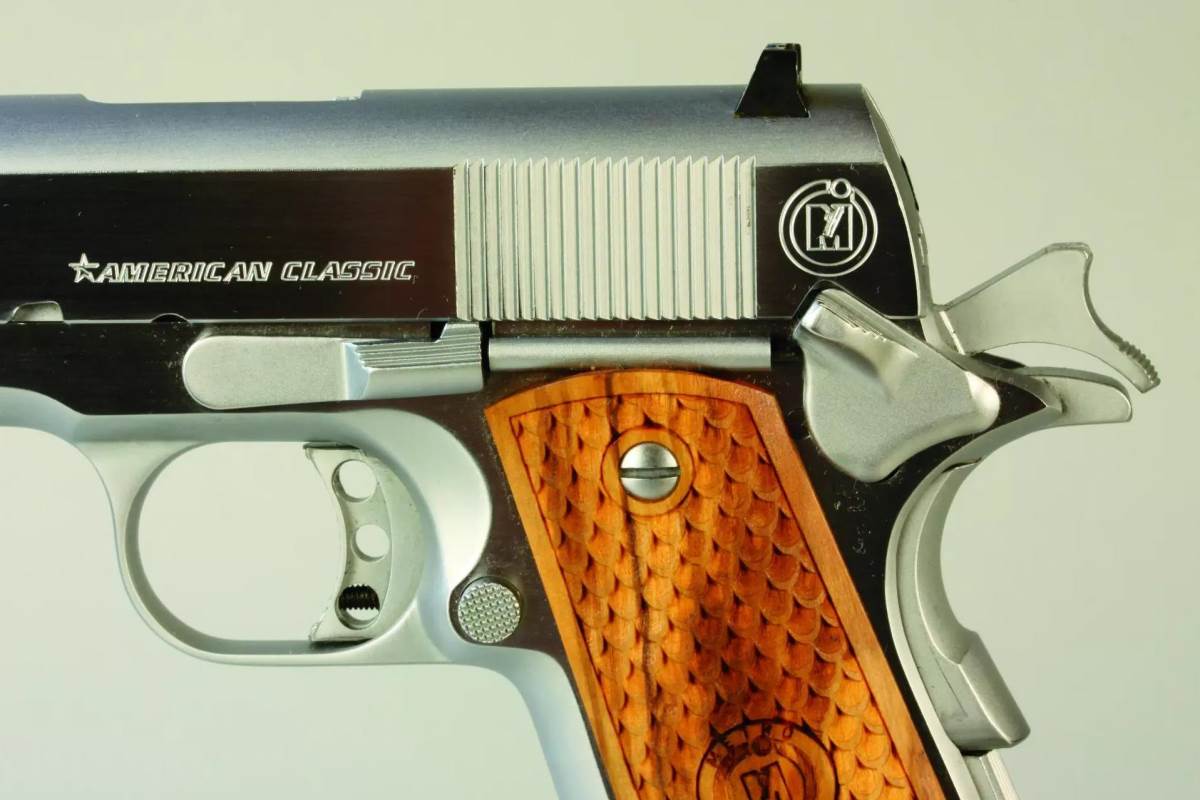
TRISTAR ARMS AMERICAN CLASSIC SPECIFICATIONS
- TYPE: 1911
- CALIBER: 9mm, .38 Super (tested), .45 ACP
- CAPACITY: 9+1
- BARREL: 5 in.
- OAL/HEIGHT/WIDTH: 8.25/5.5/1.2 in.
- WEIGHT: 40 oz.
- FINISH: Hard chrome-finished stainless steel (as tested)
- GRIPS: Fish-scale hardwood
- TRIGGER: 3-hole; 3 lb., 12 oz. pull (measured)
- SIGHTS: White 3-dot, drift-adjustable rear
- SAFETIES: Single-side thumb, memory-bump grip
- PRICE: $825
- MANUFACTURER: Metro Arms
- IMPORTER: TriStar Arms
The Super .38

When I was a kid, I got hooked on the idea of having a 1911 thanks to my dad turning me on to Mickey Spillane’s Mike Hammer books. Back then I was constantly poring over ballistics tables, and while Hammer carried a .45 ACP, I decided that a 1911 in .38 Super was the ultimate rig. How could something that fast with so much energy—and with such a cool name—not be better than everything else?
The .38 Super was developed in 1929. It is a more powerful version of the .38 Auto while retaining the Auto’s cartridge dimensions. It gained a +P designation along the way to further separate it from the .38 Auto so shooters wouldn’t try to load the Super in guns chambered for .38 Auto.
Nominal velocities for the Super are 1,130 fps for a 115-grain bullet and 1,200 fps for a 130. With a SAAMI pressure spec of 36,500 psi, it operates at a higher level than .45 ACP (21,000), 9mm (35,000) and .40 S&W (35,000)—but lower than the 10mm Auto (37,500), 9mm +P (38,500) and .357 SIG (40,000).
For a long time the .38 Super was a top choice for defensive pistol competitions, but today it has been supplanted by the .38 Super Comp, which has a narrower rebated rim and feeds more reliably in double-stack magazines.
While never popular, the .38 Super is still loaded by several manufacturers: Federal, Remington, Fiocchi, Winchester and a few others. If you worked hard enough at it, you could come up with velocity and energy comparisons to justify believing—as I did as a kid—that the .38 Super is a ballistically superior defensive round compared to the 9mm and the .45. But you would be splitting hairs at best. No, the reason to have a .38 Super is “just because.”

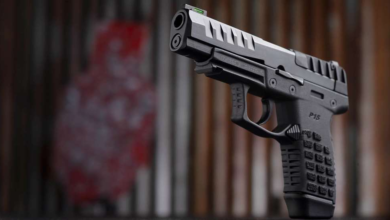
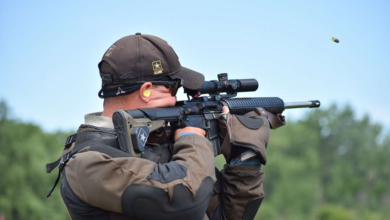
![Photo of [SHOT 2023] Mossberg Adds Optic Ready Models to the 590S Line](https://hotnews92.com/wp-content/uploads/2023/08/IMG_3217-390x220.png)
